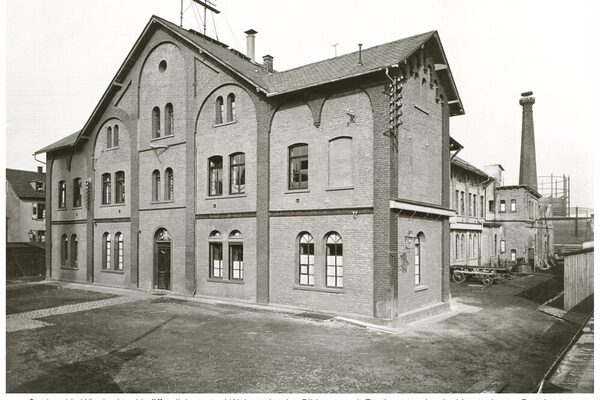Lionheart, cloth factory
In 1833, Hermann Löwenherz (1806-1866), a merchant from Limburg, set up his own business with the first cloth factory in Wiesbaden. The first production facility of the cloth factory was located in Saalgasse. In 1837, Hermann Löwenherz applied to the authorities in Wiesbaden for permission to establish a cloth factory in the Nero Valley. The valley with its stream seemed to be a good location for his business. Among other things, he wanted to use the water to operate the looms and wash away the pollutants produced. With reservations, he was granted permission to operate in 1838. However, the cloth factory was not to endanger the irrigation of the surrounding meadows, the water was not to be contaminated and the wool was not to be washed out in the water of the stream. In the same year, Hermann's younger brother Samuel (1815-1878) joined the factory as a partner.
Production in the cloth factory initially developed well in the following years; the number of looms rose from three (1838) to 16 (1842). By the end of the 1840s, the company employed up to 20 workers. However, the operation of the factory also led to disputes with other residents in the Nero valley, who accused the Löwenherz brothers of polluting the water and draining their meadows.
Economic problems such as a sales crisis, partly due to English competition, worsened business at the end of the 1840s. In 1851, Samuel Löwenherz founded the first of Wiesbaden's cold-water spas under the direction of Dr. Ernst August Genth in the converted fulling mill in the immediate vicinity of the factory. As Wiesbaden developed into a world-class spa town and the popularity of water cures increased, spa guests gladly accepted the offer. In 1854, Samuel Löwenherz also set up a public open-air swimming pool, the first in the city.
However, the direct coexistence of factory and spa proved to be unfavorable in the long term. Eventually, the company was split up. Hermann Löwenherz continued to run the factory alone at first, then with the help of his son Bernhard, and moved it to Biebrich in 1864. At this time, the company had around 50 employees, and in 1865 there were even 70. In the following years, however, business went from bad to worse, so that the company had to file for bankruptcy in 1875 and was bought up by Chemische Fabrik Kalle & Co. in 1880. Samuel Löwenherz, on the other hand, was able to expand his spa with further offers. After his death, his daughtworld-class spa town and the popularity of water cures increased, spa guests gladly accepted the offer. In 1854, Samuel Löwenherz also set up a public open-air swimming pool, the first in the city.
However, the direct coexistence of factory and spa proved to be unfavorable in the long term. Eventually, the company was split up. Hermann Löwenherz continued to run the factory alone at first, then with the help of his son Bernhard, and moved it to Biebrich in 1864. At this time, the company had around 50 employees, and in 1865 there were even 70. In the following years, however, business went from bad to worse, so that the company had to file for bankruptcy in 1875 and was bought up by Chemische Fabrik Kalle & Co. in 1880. Samuel Löwenherz, on the other hand, was able to expand his spa with further offers. After his death, his daughters sold the cold-water spa to the doctor Gustav Lehr (1850-1892) in 1880, who continued to run it.
Literature
Dickel, Horst: Being a Jew, being a citizen - the Brothers Lionheart in Wiesbaden. In: Diez/Dickel, Löwenherz [pp. 77-98].
Spiegel, Margit: Wiesbaden company letterheads. Views of buildings on business letters and invoices. 50 further short portraits of companies and hotels, vol. 2, Wiesbaden 2011 [pp. 78-82].
